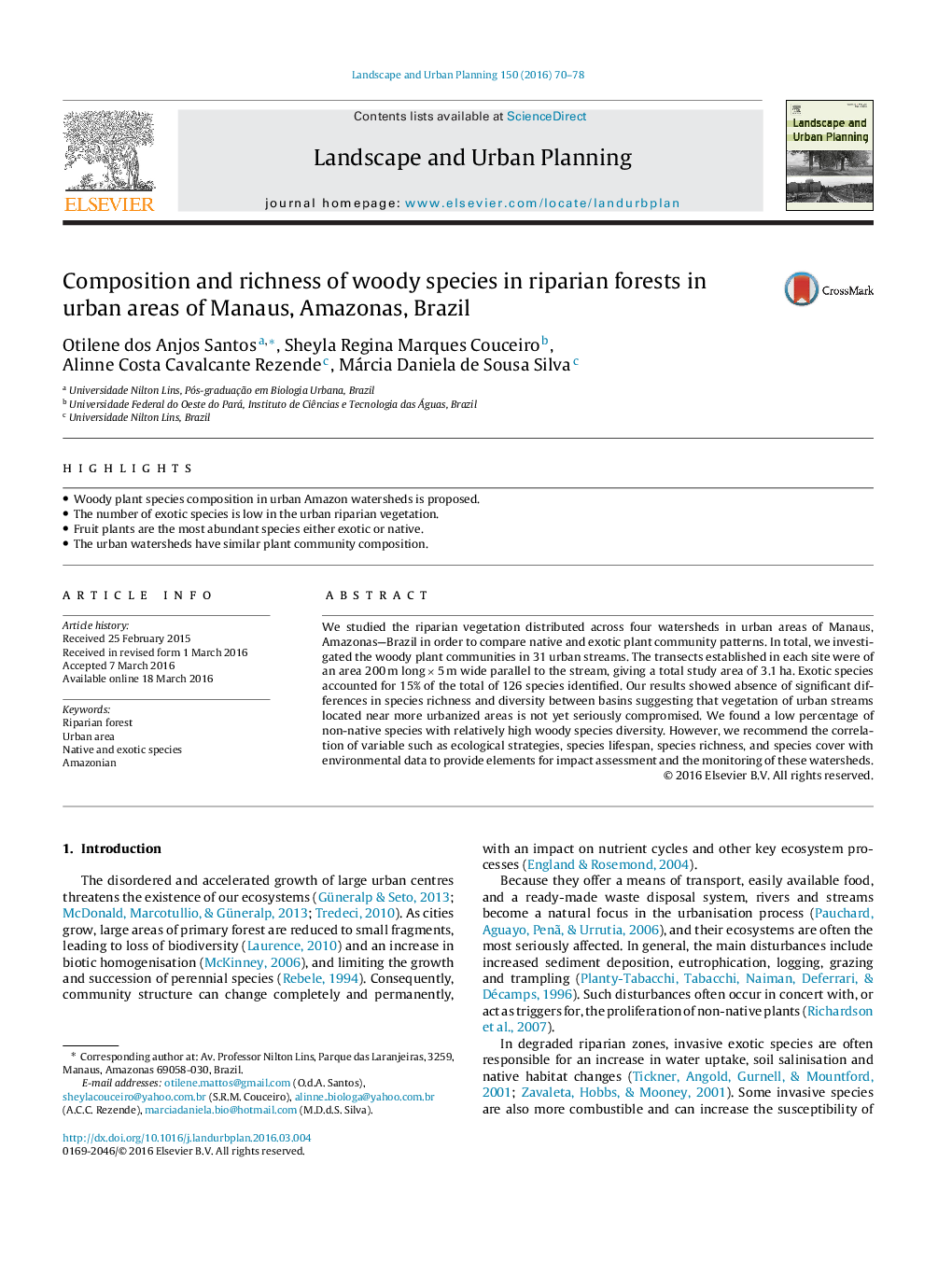| Article ID | Journal | Published Year | Pages | File Type |
|---|---|---|---|---|
| 1049106 | Landscape and Urban Planning | 2016 | 9 Pages |
•Woody plant species composition in urban Amazon watersheds is proposed.•The number of exotic species is low in the urban riparian vegetation.•Fruit plants are the most abundant species either exotic or native.•The urban watersheds have similar plant community composition.
We studied the riparian vegetation distributed across four watersheds in urban areas of Manaus, Amazonas—Brazil in order to compare native and exotic plant community patterns. In total, we investigated the woody plant communities in 31 urban streams. The transects established in each site were of an area 200 m long × 5 m wide parallel to the stream, giving a total study area of 3.1 ha. Exotic species accounted for 15% of the total of 126 species identified. Our results showed absence of significant differences in species richness and diversity between basins suggesting that vegetation of urban streams located near more urbanized areas is not yet seriously compromised. We found a low percentage of non-native species with relatively high woody species diversity. However, we recommend the correlation of variable such as ecological strategies, species lifespan, species richness, and species cover with environmental data to provide elements for impact assessment and the monitoring of these watersheds.
